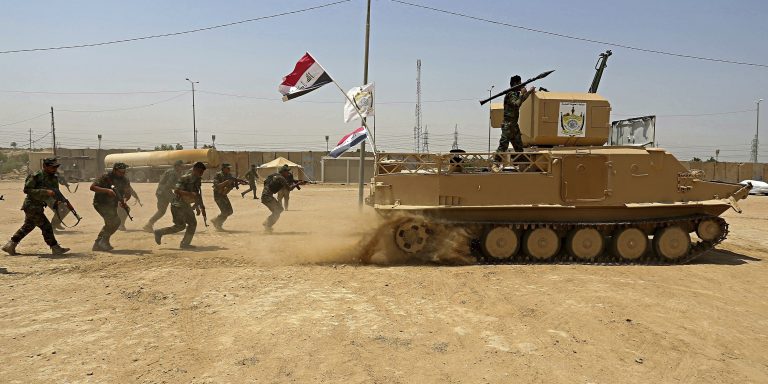INTELBRIEF
February 2, 2018
TSC IntelBrief: Iran Prospers From ‘Caliphate Collapse’

- Iran is the primary beneficiary of the elimination of the self-declared ‘caliphate’ of the so-called Islamic State.
- Iran’s position in Iraq will depend on the outcome of national elections in May.
- Iran’s extensive influence in Syria enables it not only to secure its key allies but also to threaten Israeli security.
- The Trump Administration is more likely to roll back Iran’s influence in Iraq than in Syria.
The Trump Administration claims credit for crushing the ambition of the so-called Islamic State to establish a caliphate in the parts of Iraq and Syria it captured in 2014. The group’s key strongholds in Mosul and Raqqa were liberated by local partners of U.S. forces in the first year of the Trump presidency. However, it is Iran—not the United States—that is the chief beneficiary of Islamic State defeats, even increasing its ability to project power against its most formidable regional adversary: Israel.
Syria’s military has been severely depleted by seven years of war, and Iran-backed militia forces, particularly those of Lebanese Hizbollah, are the preponderant ground force in Syria. Iran is well positioned to block any Russia-led political settlement—urged by the United States—that would end the rule of Syrian President Bashar Al Assad, as well as to prevent any cross-border threats to Hizbollah in Lebanon posed by the Islamic State or other Sunni jihadist groups. Iran and its proxies can now threaten Israel from its Golan Heights border with Syria, as well as continue the longstanding threat from the northern Israeli border with Lebanon. Further, Iran now has the potential to use routes in both Syria and Iraq as a secure land supply corridor to Hizbollah.
Iran’s post-caliphate position in Iraq is far more precarious than it is in Syria. In Iraq, the United States has substantial influence based on its pivotal role in helping the government defeat the Islamic State challenge. Iran has the allegiance of at least 40,000 fighters from various Iraqi Shi’a militias that Iran has armed and trained, but the U.S.-backed government forces are better armed and organized than are the militias. Prime Minister Haider al-Abadi has called for the United States to keep a post-Islamic State military presence in Iraq in order to continue advising and training Iraqi forces. Such a U.S. force would likely be smaller than the current 6,000-member U.S. contingent, but still significant. Abadi seeks to fold some of the Shi’a militias into the regular armed forces structure and demobilize the remainder. However, the commanders of the Iran-backed militias have become powerful political actors and some are backing political coalitions that are competing against Abadi in the May 12, 2018, national elections. If Abadi is defeated by a more pro-Iranian figure in the elections, the U.S. strategic position in Iraq will deteriorate relative to that of Iran.
The Trump administration’s strategy towards Iran seeks to roll back Iranian influence broadly, but the prospects to do so in Syria are poor. The administration has no relationship with the Assad government and still calls for its replacement. Trump administration officials have said they will keep about 2,000 troops there indefinitely, but that force level is too small to substantially shape political events. And, in Syria, the United States is wrestling with conflicts within its own alliance, particularly between Turkey and the Syrian Kurds. These factors combine to make it extremely unlikely that the United States can diminish Iranian influence in Syria.
For tailored research and analysis, please contact: info@thesoufancenter.org
[video width="960" height="540" mp4="https://thesoufancenter.org/wp-content/uploads/2018/02/Final-Edit-1-123.mp4" poster="https://thesoufancenter.org/wp-content/uploads/2018/02/AP_17234339849443.jpg"][/video]